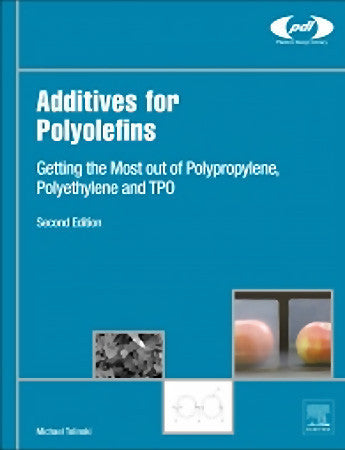The information on each nucleating agent included in the Databook of Nucleating Agents is divided into five sections: General information, Physical properties, Health and safety, Ecological properties, and Use & Performance. The data belong to over 100 data fields, which accommodate a variety of data available in source publications. The description of each section below gives more detail on the composition of information.
In General information section, the following data are displayed: name, CAS #, EC #, Acronym, Chemical category, Common name, Common synonym, IUPAC name, Molecular structure, Molecular formula, Molecular mass, Masterbatch, Mixture, RTECS number, Moisture contents, Purity, and Product contents.
Physical-chemical properties section contains data on State, Odor, Color, Brightness, Whiteness, Acid #, Average particle size, Boiling point, Melting point, Density, Relative permittivity, Melt flow rate, Gas production, Expansion, Heat of combustion, Heat of fusion, Henry’s law constant, Oil absorption, Loss on ignition, pH, Refractive index, Surface tension, Solubility in water and solvents, Specific surface area, Thermal conductivity, Vapor density, Vapor pressure, Viscosity, Volatility, Volume resistivity, and pKa1/pKa2.
Health and safety section contains data on Flash point, Flash point method, Autoignition temperature, Explosive LEL, Explosive UEL, NFPA Health, NFPA Flammability, NFPA Reactivity, HMIS Health, HMIS Fire, HMIS Reactivity, HMIS Personal protection, UN number, UN Risk Phrases, R, UN Safety Phrases, S, DOT Hazard Class, UN/NA hazard class, UN packaging group, ICAO/IATA Class, IMDG Class, Proper shipping name, Rat oral LD50, Mouse oral LD50, Rabbit dermal LD50, Inhalation rat LC50, Route of entry, Skin irritation, Eye irritation, Ingestion, Inhalation, First aid: eyes, skin, and inhalation, Carcinogenicity by ACGIH, IARC, NTP, and OSHA, Mutagenicity, and TLV - TWA 8h (ACGIH, NIOSH, OSHA) Ecological properties section contains data on Biodegradation probability, Aquatic toxicity LC50 (Rainbow trout, Bluegill sunfish, Fathead minnow, Sheepshead minnow, and Daphnia magna), Bioconcentration factor, Biological, Chemical, and Theoretical Oxygen Demand, and Partition coefficient (log Kow and log Pow).
Use & performance section contains information on Manufacturer, Outstanding properties, Recommended for polymers, Recommended for products, Concentration used Processes, Process temperature, and Food contact.
This book is must to have for manufacturers of nucleating agents, manufacturers of products containing nucleating agents designed for various purposes, regulating bodies, academia, and research laboratories. The databook contains information which is complete, timely, up-to-date, and useful in numerous fields of application and for thousands of manufactures and products.
The Databook of Nucleating Agents is more useful in combination with Handbook of Nucleating Agents. Both books do not overlap but complement each other.
2 Information on data fields
3 Nucleating and clarifying agents
a. Acids
b. Amides
c. Carbon nanotubes
d. Graphene derivatives
e. Mineral origin
f. Phosphate esters
g. Polymeric
h. Salts of carboxylic acids
i. Sorbitol derivatives
j. Xylan esters
k. Others
Anna Wypych, born in 1937, studied chemical engineering and polymer chemistry and obtained M. Sc. in chemical engineering in 1960. The professional expertise includes both teaching and research & development. Anna Wypych has published 1 book (MSDS Manual), 6 scientific papers, 3 databases, and obtained 3 patents. She specializes in polymer additives for PVC and other polymers and evaluates their effect on health and environment.
George Wypych has a Ph. D. in chemical engineering. His professional expertise includes both university teaching (full professor) and research & development. He has published 14 books: PVC Plastisols, (University Press); Polyvinylchloride Degradation, (Elsevier); Polyvinylchloride Stabilization, (Elsevier); Polymer Modified Textile Materials, (Wiley & Sons); Handbook of Material Weathering, 1st, 2nd, 3rd, and 4th Editions, (ChemTec Publishing); Handbook of Fillers, 1st and 2nd Editions, (ChemTec Publishing); Recycling of PVC, (ChemTec Publishing); Weathering of Plastics. Testing to Mirror Real Life Performance, (Plastics Design Library), Handbook of Solvents, Handbook of Plasticizers, Handbook of Antistatics, Handbook of Antiblocking, Release, and Slip Additives, PVC Degradation & Stabilization, The PVC Formulary (all by ChemTec Publishing), 47 scientific papers, and he has obtained 16 patents. He specializes in polymer additives, polymer processing and formulation, material durability and the development of sealants and coatings. He is included in the Dictionary of International Biography, Who's Who in Plastics and Polymers, Who's Who in Engineering, and was selected International Man of the Year 1996-1997 in recognition for his services to education.




